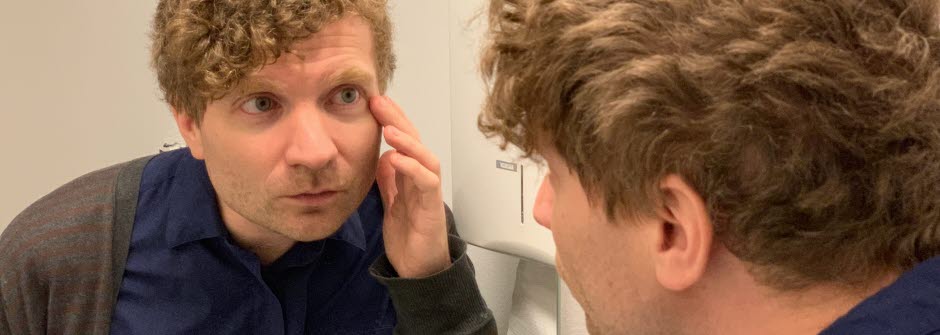- What is Cognitive Behavioral Therapy (CBT)?
- Internet treatment step by step
- Depression
- Body dysmorphic disorder (BDD)
- Health anxiety
- Irritable Bowel Syndrome (IBS)
- Generalized anxiety disorder (GAD, the ORIGAMI-study)
- Panic disorder
- Social anxiety disorder
- Sleeping problems (insomnia)
- Obsessive-compulsive disorder (OCD)
- Behandling
- Current page: Body dysmorphic disorder (BDD)
What is body dysmorphic disorder (BDD)?
Please note that the Internet-based treatment described on this website is conducted in Swedish and only available to people registered and living in Sweden.

Do you spend a lot of time worrying about the way you look? Do you feel the need to conceal, control or change perceived flaws in your appearance? If you feel so anxious about your appearance that it interferes with your day-to-day functioning or causes significant emotional distress, you might be suffering from BDD.
How it feels
Body dysmorphic disorder (BDD), or body dysmorphia, is a condition where a person is preoccupied with one or several flaws in their appearance. For people with BDD, critical thoughts and unhappiness about their own appearance cause significant distress or impairment in social, occupational, or other important areas of functioning. To get the diagnosis one needs to spend at least one hour a day worrying about the perceived flaws. BDD could be described as a type of negative body image that affects the person in such extensive way that it becomes a disease.
Typical symptoms
- Preoccupation with one or several perceived flaws in the appearance.
- Attempts to conceal, control or change perceived flaws.
- Avoidance of certain situations or activities caused by shame or anxiety.
- Preoccupation with perceived flaws leads to impairment in social, occupational, or other important areas of functioning.
- The preoccupation causes anxiety, sadness or worry.
Consequences
BDD often leads to limitations in everyday life. It is also common to feel depressed because of the impact BDD can have over one’s life. Without treatment it is hard to break the negative spiral caused by BDD.
Occurrence
Approximately 1,5 % of the adult population have BDD. This means that up to 150 000 people in Sweden have BDD.
Treatment
If you think that you have BDD, we recommend that you seek help through the health care service where you live.
Please notice
The Internet-based treatment described on this website is conducted in Swedish and is only available to people registered and living in Sweden.
Oskar Flygare